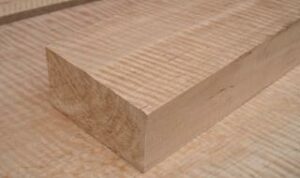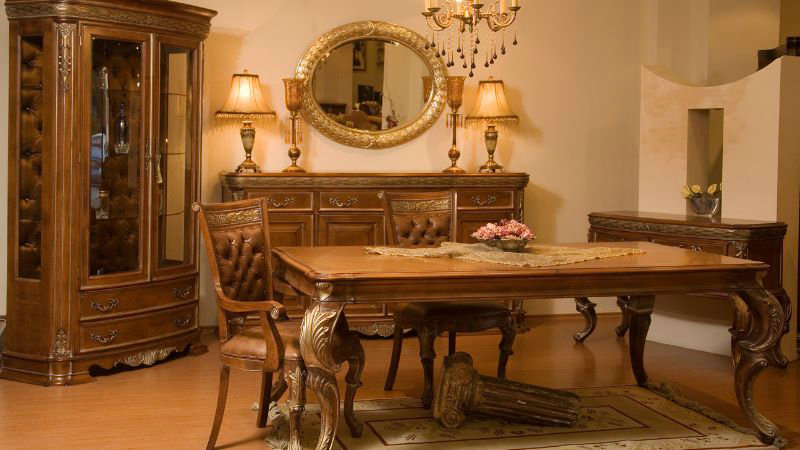
When it comes to fine furniture or furniture design, few styles can match the enduring elegance and sophistication of French decor.
From the ornate grandeur of King Louis XIV to the rustic charm of French Provincial, French furniture has captivated interior enthusiasts for centuries with its exquisite craftsmanship, luxurious materials, and timeless aesthetic appeal.
At the heart of French style furniture lies a delicate balance between opulence and restraint, luxury and livability. Each piece tells a story of the country’s rich cultural heritage, reflecting the changing tastes and influences of different eras.
This article explores the essence of French style furniture, highlighting its historical significance, distinctive characteristics, and the ways it continues to influence modern interior design.
In Hoolnn, you will find the timeless beauty and sophistication of French style furniture, a testament to craftsmanship and style that enhances the aesthetic of any home.
What is French Style Furniture?
French style furniture refers to pieces that originated in France, particularly during the 17th and 19th centuries.
French furniture is known for its refined elegance, often featuring luxurious materials, intricately carved details, clean lines, gilding, and expensive upholstery. It was heavily influenced by the lavish tastes of the French monarchy and aristocracy.
What are the Materials Used in French Furniture
The natural materials used in French furniture are high quality, which defines its renowned elegance.
Walnut and oak are particularly appreciated for their durability and rich textures. Mahogany offers a reddish-brown hue with a straight grain that was highly sought after during the 18th century.
Ash and elm were also commonly used due to their local availability and appealing grains.
Metal accents provide both functionality and a decorative element.
Gilt bronze, also known as ormolu, was commonly used for intricate handles and protective mounts. Brass, copper, and steel were often crafted into decorative hardware, such as pulls and keyhole escutcheons, that add both security and style to the furniture.
To sum up, some commonly used materials include:
- Fine woods like oak, walnut, mahogany, and European beech
- Marble and fine stone for accents, flooring, and countertops
- Brass, bronze, and wrought iron for decorative elements and hardware
- Expensive upholstery fabrics like silk and velvet
- The use of these premium materials contributes to the opulence and durability of French furniture pieces
What is the History of French Furniture Design?
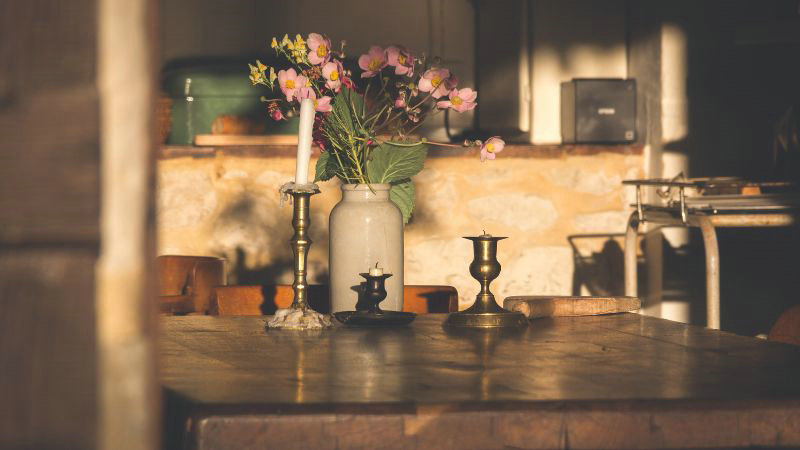
The history of French furniture design spans several centuries and is characterized by distinct styles that evolved with each ruling monarch or leader.
Origins of French Style Furniture
French furniture style is deeply embedded in the medieval era, but it truly began to take on its feature during the Renaissance. This period saw a blend of Italian influence with local tradition, creating uniquely French styles that began to emerge from cities like Lyon.
French Furniture through the Ages
The monarchy played a decisive role in shaping the elegance of French furniture.
Louis XIV style was designed to reflect the grandeur and opulence of his court. Baroque styles characterized by bold, dramatic, and ornate details were fashionable.
Louis XV ushered in the Rococo movement. Louis XV furniture shifted towards lighter, more graceful furniture with playful and intricate designs.
In the late 18th century, the French Revolution brought changes that led to more austere furniture with a focus on function.
The subsequent Directoire and Empire styles under Napoleon echoed the return to classical principles, showcasing Neoclassical and ancient Egyptian and Roman influences.
Moving into the 19th century, France saw the Louis XVI style.
Louis XVI Furniture embraced Neoclassicism wholeheartedly. The Louis Philippe style followed after the fall of the Empire, leaning toward a more bourgeois sensibility with simpler forms.
Lastly, the Second Empire under Napoleon III saw a resurgence in the lavishness reminiscent of earlier French furniture, incorporating elements from various historical periods into elaborate pieces that suited the tastes of the Second Empire.
What are the Characteristics of French Furniture
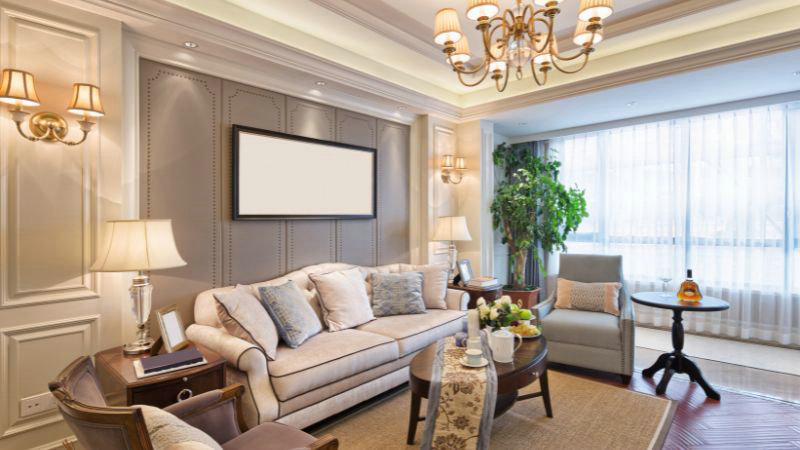
Each King Louis brought a distinct signature style to furnishings and decorative arts, defining his era and leaving a lasting impact on global design trends.
Here is an overview of the key periods and their defining characteristics:
| Period | Years | Characteristics and Decorative Motifs | Common Furniture |
|---|---|---|---|
| Middle Ages | 1300-1500 | Practical and basic furniture, often made of oak | Large chests and trunks for storage and seating |
| Renaissance | 1500-1610 | Designs influenced by classical Greek and Roman elements, featuring deep carvings, ornate mythological and biblical motifs | |
| Louis XIII | 1610-1640 | More opulent furniture with cherub, scroll, fruit, and floral carvings. French Country look emerged for the middle class | Upholstered seating with padding secured to the frame |
| Louis XIV | 1643-1715 | Lavish, gilded furniture with intricate ornamentation to display wealth and power | Writing desks, chandeliers, and lacquered pieces with gold decorations |
| Régence | 1715-1730 | Transitional style between Baroque and Rococo, featuring curved lines, flowing edges, and the iconic cabriole leg | Bookcases and chaise longues |
| Louis XV | 1730-1770 | Rococo style with graceful curves, flowing scrolls, and nature-inspired motifs like shells, flowers, and birds | Furniture designed for comfort and conversation, like the bergère armchair |
| Louis XVI | 1760-1789 | Return to classical elements with straighter lines, geometric shapes, fluted legs, and restrained ornamentation | Mahogany and walnut furniture |
| Directoire | 1789-1804 | More practical furniture with Neoclassical influences and symbolic motifs following the French Revolution | Egyptian elements like sphinxes |
| Empire | 1804-1815 | Revival of grandeur and imperial splendor inspired by ancient Greece and Rome. Bold geometric forms, rich materials, and gilt-bronze decorations | Furniture with geometric forms and gilt-bronze decorations |
| Art Nouveau | 1890-1920 | Experimental style characterized by flowing, organic lines and nature-inspired motifs | Furniture with organic, flowing lines |
| Art Deco | 1920-1940 | Sleek geometric lines, exotic woods, and luxurious materials define the modern style | Furniture with geometric lines and luxurious materials |
Iconic French Furniture Pieces from Hoolnn
Your journey through the elegance of french style furniture with the famous furniture maker Hoolnn will reveal a variety of armchairs and chaise lounges, known for their artistry, as well as tables that blend both opulence and practicality.
Armchairs and Chaise Lounges
1. Armchairs
In the realm of Louis XIV furniture or even transitioning into the Louis XV era, armchairs have stood out as a testament to craftsmanship and luxury. The Louis XVI Armchair, for instance, is celebrated for its wooden frame, often adorned with intricate carvings, and its upholstery made from premium fabrics. Depending on the period, these armchairs can display a range of styles from the flamboyant Rococo to the more subdued neoclassical designs.
Hoolnn’s armchair has timeless design and exquisite craftsmanship, sure to add a touch of elegance and sophistication to any space.
Each chair is handcrafted by skilled artisans using premium materials, ensuring that it is not only beautiful but also durable and comfortable.
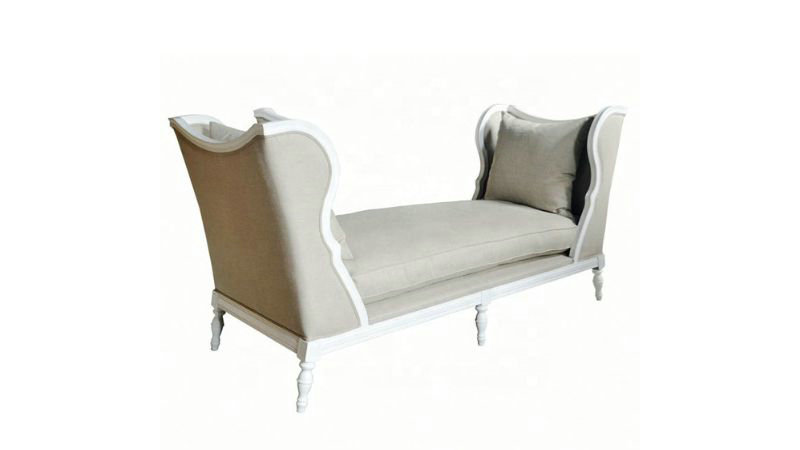
Also known as chaise longues, these pieces fuse comfort with sophistication. Originating from the blend of chairs and daybeds, they are perfect for reclining and were highly favored in aristocratic homes for their elegance and functionality.
3. Tables:
From the grand dining tables to the more intimate side tables, French furniture design is characterized by its intricate marquetry work and use of exotic veneers.
Dining tables are often large, oval or round, with bold carvings and gilt bronze embellishments, serving not only as furniture but as a statement of style and power.
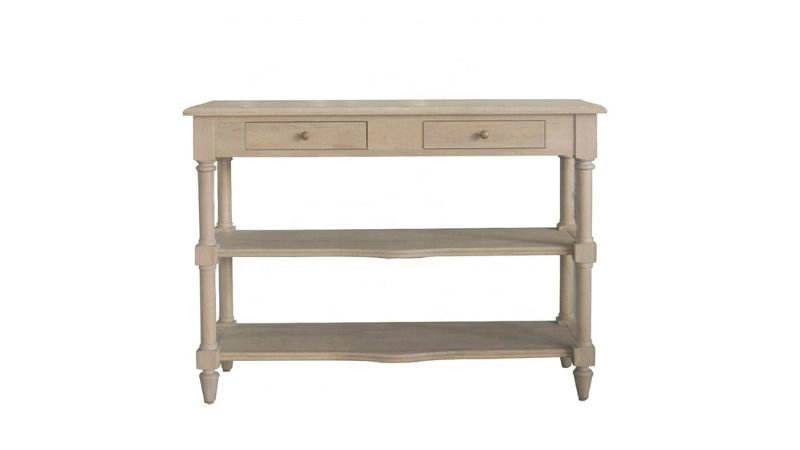
Console tables are narrow, tall tables designed to be placed against a wall. Hoolnn console tables typically feature curved lines and feminine silhouettes

Coffee tables are low, long tables designed for the living room to place in front of a sofa. They tend to have a more casual, farmhouse aesthetic, while French provincial styles are more ornate and elegant.
What is the Difference Between French Provincial and French Provençal?
When shopping for french style furniture, you may feel confused about these two terms: French Provincial and French Provençal.
French Provincial refers more broadly to the style of furniture and decor that originated in the French provinces (areas outside of Paris) during the 17th and 18th centuries.
It was inspired by the more ornate Parisian styles of the time, like Louis XV style and Louis XVI style, but interpreted in a simpler, more rustic manner suited for country homes. Key characteristics include curved lines, cabriole legs, distressed finishes, and motifs like flowers, leaves, and scrolls.
Provençal style refers specifically to the style and culture of Provence, a region in southeastern France known for its Mediterranean influences. It has a warm, sun-baked feel with earthy colors, raw textures, and nature-inspired accents.
The typical elements include terracotta, ceramics, wrought iron, and fabrics featuring olives, lavender, and cicadas.
In summary, all Provençal decor can be considered French Provincial, but not all French Provincial is strictly Provençal in origin.
Is French Provincial the Same as French Country?
All French Provincial can be considered French Country, but not all French Country is strictly French Provincial. The two styles blend together and share many common elements, but French Provincial will always retain a bit more refinement and ties to the Provence region compared to the broader French Country look.
French Country is more rustic and laid-back, while French Provincial leans a bit more formal and luxurious.
French Country incorporates more nature-inspired motifs and colors, while French Provincial favors classical and romantic elements
French Country is a mix of styles from different regions of rural France, while French Provincial is more closely tied to the Provence region specifically.
Frequently Asked Questions
How can you recognize French Provincial furniture?
You will notice that French Provincial furniture combines simplicity and elegance. It features graceful curves and minimal ornamentation and often carries a rustic charm that echoes the French countryside.
How do you go about identifying authentic French furniture pieces?
Authentic French furniture pieces often showcase expert craftsmanship, with features like dovetail joints in drawers, antique hardware, and an overall balanced design. Examining the construction and materials, along with any maker’s marks, can assist in identification.

